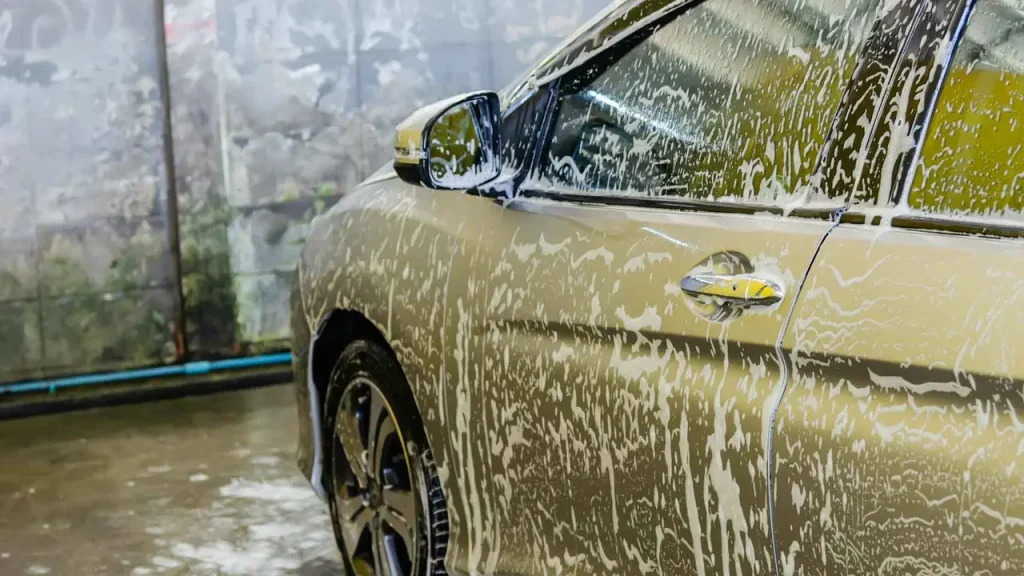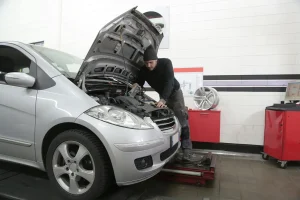
Automatic vs Manual Car Wash Pros and Cons A Complete Guide
I remember the sheer panic. Sitting in my brand-new car, the paint so glossy you could see your future in it, staring at the entrance of a local car wash. It looked like a giant, hungry beast with spinning foam tentacles. Do I go in? Or do I spend my Saturday with a bucket and sponge? This is the classic dilemma every car owner faces, a true automotive rite of passage. It’s a debate that pits convenience against control, speed against sensitivity. So, what are the real Automatic vs Manual Car Wash Pros and Cons when you strip away all the marketing noise?
Understanding Your Car Wash Options
At its core, the choice is simple. You can either pay a machine to do the work for you, or you can roll up your sleeves and do it yourself. But the nuances within those choices are vast. Modern car washes aren’t the paint-stripping brutes they used to be, and manual washing has evolved far beyond a simple bucket of soapy water. One method promises to save you time, the other promises to save your paint job. But do they deliver? Let’s dive in.
The Appeal of Automatic Car Washes
Let’s be honest, life is busy. The idea of getting a clean car in under ten minutes without leaving the driver’s seat is incredibly tempting. Automatic car washes are the fast food of vehicle cleaning; they’re everywhere, they’re quick, and they get the basic job done when you’re in a pinch. For many, this convenience is the single biggest factor, outweighing almost every potential negative. It’s the default choice for a reason.
How Modern Automatic Car Washes Operate
When you pull into an automatic wash, you’re typically entering one of two main types: soft-touch or touchless. Soft-touch systems use large, rotating brushes and cloth-like strips to physically scrub the dirt from your vehicle. They’ve improved over the years, using softer materials than the old-school plastic bristles, but the principle is the same: physical contact.
Then there’s the touchless wash. These systems rely exclusively on high-pressure water jets and strong chemical detergents to blast grime away, meaning nothing solid ever makes contact with your paint. This immediately brings up the critical question: is touchless car wash better for paint? In theory, yes, because it dramatically reduces the risk of scratches from abrasive materials. However, to compensate for the lack of physical scrubbing, touchless washes must use more aggressive chemicals, which can potentially be harsh on your car’s wax or ceramic coating over time. It’s a trade-off between abrasion and chemical exposure.
Advantages of Opting for an Automatic Wash
Beyond the obvious, the benefits are rooted in pure, unadulterated efficiency. They are engineered for volume and speed, processing dozens or even hundreds of cars per day.
Speed and Sheer Convenience
You just can’t beat it. On a busy weekday, you can have your car washed, waxed, and dried during your lunch break. There’s no prep, no cleanup, no storing wet towels. You drive in dirty and drive out clean. It’s a simple, beautiful transaction of time for service.
Cost-Effectiveness and Accessibility
A single automatic wash is often cheaper than buying all the individual supplies needed for a proper hand wash. And with the rise of monthly subscription models, you can wash your car as often as you like for a flat fee. They’re also located on what feels like every major street corner, making them incredibly accessible no matter where you are.
Potential Downsides of Automatic Systems
But that convenience can come at a price. For every person who loves the ease of an automatic wash, there’s a car enthusiast who wouldn’t let their vehicle within a hundred feet of one. Their fears aren’t entirely unfounded.
Risks to Your Vehicle’s Finish
The biggest concern with soft-touch washes is the risk of swirl marks and micro-scratches. Those giant brushes clean dozens of cars before yours, and they can trap dirt and grit from a muddy off-roader that was just ahead of you. This trapped debris then gets rubbed all over your paintwork. While modern materials are much gentler, the risk is never zero. Even touchless washes aren’t perfect; if the high-pressure jets are too intense or angled poorly, they can potentially damage loose trim, emblems, or even chip paint on older vehicles.
Limitations in Cleaning Thoroughness
Machines follow a set pattern. They can’t see that stubborn patch of bird droppings on your bonnet or the layer of grime behind your door handles. They are notoriously bad at cleaning complex wheel designs and the lower sections of the car behind the tyres. You’ll often drive away with a car that looks clean from twenty feet away, but up close, you’ll find plenty of missed spots. It’s a surface-level clean, not a deep clean.
Embracing the Manual Car Wash Approach
On the opposite end of the spectrum is the manual car wash. This is the hands-on, detail-oriented method that requires your direct involvement, your effort, and your time. It’s a ritual for some, a chore for others, but it offers a level of care a machine simply cannot replicate.
What Defines a Hands-On Car Wash?
A manual car wash is exactly what it sounds like: you, armed with buckets, mitts, soaps, and towels, cleaning your vehicle by hand. This can be done at home in your driveway or at a self-service bay that provides the high-pressure water and foam brushes. The key element is your direct control over every single step of the process, from the pre-rinse to the final drying wipe.
Key Benefits of Washing Your Car Manually
Why would anyone choose this laborious process? Simple. For the control and the results. There are immense advantages of washing car at home or at a self-service bay, especially for those who view their car as more than just a tool for transportation.
Unparalleled Cleaning Control and Precision
You are the cleaning machine. You can spend extra time on heavily soiled areas, gently scrub away bug splatters, and ensure every nook and cranny of your intricate alloy wheels is spotless. You see the dirt, and you remove it. There are no missed spots unless you choose to miss them. This method allows for a truly comprehensive and deep clean.
Gentle Care for Delicate Surfaces
When you wash your car by hand, you control the materials. You can use a brand-new, plush microfibre wash mitt, pH-neutral soap designed for your car’s specific finish, and separate buckets to keep rinse water from contaminating your clean, soapy water. This dramatically reduces the risk of scratching and is the safest way to care for delicate classic car paint, expensive ceramic coatings, or custom vinyl wraps.
Challenges and Considerations for Manual Washing
Of course, this path is not without its obstacles. It’s the opposite of convenient and requires a significant personal investment that goes beyond just money.
Time, Effort, and Skill Investment
A proper manual wash can easily take an hour or two, or even more if you include waxing. It’s a physical activity that involves bending, reaching, and scrubbing. There’s also a learning curve. Using the wrong technique, like washing in direct sunlight or using a dirty sponge, can cause just as many swirls and scratches as a bad automatic wash.
Required Equipment and Setup
The initial investment can be substantial. You’ll need at least two buckets (one for soap, one for rinsing), grit guards for the buckets, a quality wash mitt, specialized car wash soap (dish soap is a huge no-no), multiple microfibre towels for drying, and potentially wheel brushes and other detailing tools. Storing all this equipment also requires space.
Choosing the Right Wash for Your Vehicle and Lifestyle
So, the big question remains: which is right for you? There isn’t a single correct answer for everyone. Ultimately, weighing the Automatic vs Manual Car Wash Pros and Cons comes down to your personal priorities, your car’s value, and how much time you have.
Assessing Your Vehicle’s Needs and Condition
Do you drive a brand-new luxury sedan with flawless black paint? You’ll probably want to stick with a careful manual wash to preserve that finish. Is your car a decade-old daily driver whose main job is to get you from A to B? The minor risk of a soft-touch automatic wash might be perfectly acceptable in exchange for the convenience. If you have a ceramic coating, a touchless automatic wash is generally considered safer than a soft-touch one.
Matching Your Decision to Time and Budget
Be realistic. If you know you don’t have two hours to spare every other weekend, a manual wash routine is doomed to fail, leaving your car dirty for extended periods. In that case, a subscription to a good local automatic car wash is a far better option than doing nothing at all. If your budget is tight, the one-time investment in manual washing supplies can save you a lot of money in the long run compared to paying for washes every week.
Considering Environmental Impact
This is a surprisingly complex factor. Washing at home can use more water than a commercial car wash, many of which are required to recycle their water. However, washing at home gives you control over the chemicals you use, allowing you to choose biodegradable, environmentally friendly soaps. That chemical runoff from your driveway goes directly into storm drains, whereas commercial facilities have filtration systems. It’s a tough call with valid arguments on both sides.
Smart Washing Practices for Every Method
Whichever method you lean towards, you can take steps to improve the outcome and minimize the risks. It’s not just about the method, but how you use it.
Enhancing Your Automatic Car Wash Results
Don’t just drive in blind. Before you enter, take a moment to pre-rinse any heavy, caked-on mud or bird droppings if possible. Choose a well-maintained facility; if the brushes look old and tattered, go somewhere else. After the wash, use a clean microfibre towel to dry any missed spots, especially in door jambs and around mirrors, to prevent water spots.
Optimizing Your Manual Car Washing Routine
Always use the two-bucket method: one with soapy water, one with plain water for rinsing your mitt. This prevents you from dragging dirt you’ve just removed right back onto the paint. Wash from the top down, saving the dirtiest parts of the car (the lower panels and wheels) for last. And never, ever wash or dry your car in direct sunlight, as it can cause soap and water to dry too quickly, leaving spots and streaks behind. Mastering these small details is a cornerstone of good car maintenance tips for longevity, as protecting the paint is the first line of defence against rust and decay.
Final Thoughts on Maintaining Your Car’s Shine
There is no champion in this battle. Both automatic and manual car washes have a valid place in the world of vehicle care. The best solution might even be a hybrid approach—using a touchless automatic wash for maintenance cleaning during busy weeks and reserving a weekend for a thorough manual wash once a month. It’s about finding a sustainable routine that keeps your car clean without driving you crazy. Understanding the Automatic vs Manual Car Wash Pros and Cons empowers you to make an informed decision, protecting your investment and keeping your ride looking sharp for years to come. In the end, a clean car is a happy car, regardless of how it got that way. Just pick the path that works for you.







